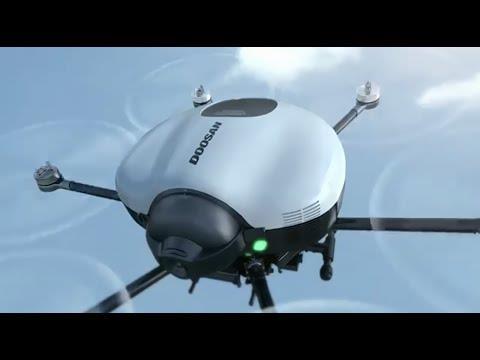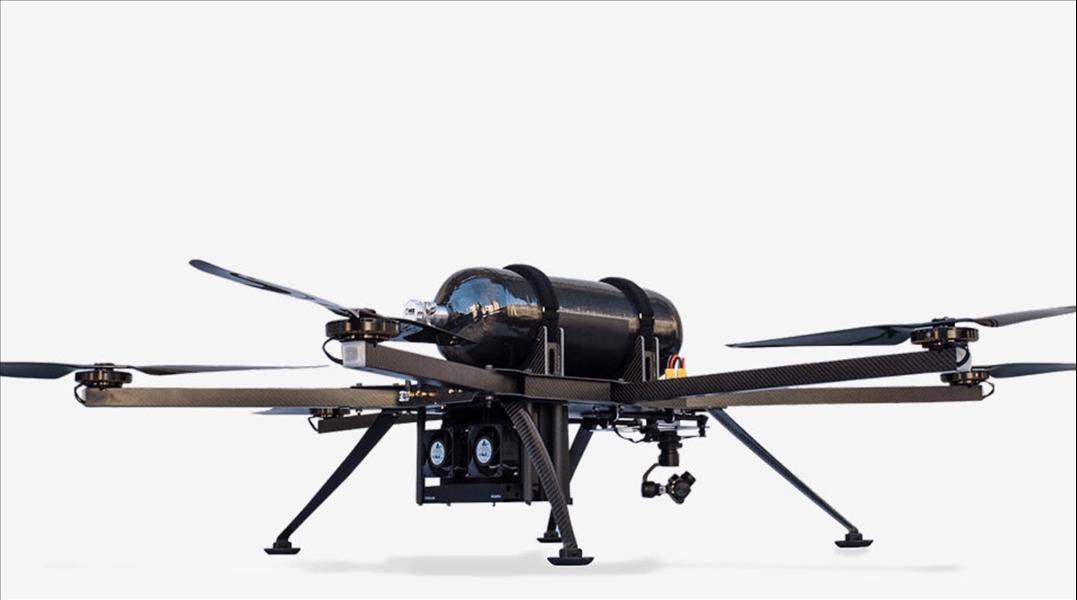(MENAFN- Asia Times) Hydrogen fuel cell technology (HFCT) is expanding rapidly in many sectors.
For example, Volvo and Daimler have now to speed up the transition away from diesel trucks and towards fuel cell electric vehicles in the European Union.
German carmaker BMW plans to unveil a limited series in 2022, and French is investing heavily in mature fuel cell propulsion systems for the zero-emission aviation market.
Even hydrogen-powered trains are now in operation in Europe.
Well, get ready for a new twist.
According to a report in , , a South Korean-based hydrogen company, in concert with Russian researchers, has announced it will work to commercialize a hydrogen fuel cell drone.
The R & D firm claims that using fuel cells can increase the flying time of a drone more than four times over traditional lithium-ion batteries. It also envisions the drones being used for parcel delivery, agriculture, freight and even passenger transportation.
Hypower is working with the fuel cell research center under the Institute of Problems of Chemical Physics (IPCP) of the (RAS), the report said.
, who leads the IPCP RAS research center, said the combination of Russian hydrogen fuel cell technology and Korean artificial intelligence technology will lead to mass production of the drone at competitive prices.
''We will lead the popularization of drone aircraft in the delivery drone commercialization market that needs around 3 million commercial drones in 2025 by establishing the hydrogen fuel cell mass production system exclusively for drones in South Korea,'' he said.
The companies will work to develop drones for multiple applications in both Russia and South Korea, the report said.
The drone, which has a flight time of over three hours, Hypower said, features a 12-liter fuel canister with 4.8 hours of battery life.
Hypower is not the only company working on hydrogen-powered drones.
(DMI) announced it too had successfully tested a hydrogen-powered drone in a humanitarian delivery, the report said.
In February, DMI said it would seek European Union approval for its hydrogen fuel cell powerpack for drones later this year. The pack provides 2.6 kilowatts of power for two hours of flight time.
DMI plans to sell its product in Europe, Korea, the US and China.

To help solve the problem of transporting hydrogen to drones, , a UK-based company, has developed a hydrogen transport cylinder — the IE-Soar — that features a high-pressure valve, the report said.
The valve is a key enabler and will make it simple for customers to get their full cylinders where they need them and ready to use, company officials said.
Currently, the legal transport of hydrogen in Europe and the US is limited.
''We know our fuel cells are the ideal choice for UAV (unmanned aerial vehicle) operators requiring longer flight time,'' Andy Kelly, head of UAV product development at Intelligent Energy, said.
''However, it is important that we support [these efforts] with the peripherals required to get operational. This valve is a key enabler and will make it simple for our customers to get their full cylinders where they need them and ready to use.''
Hydrogen is combined in the fuel cell with oxygen from the air to produce electricity; as long as hydrogen fuel is provided to the cell, the battery generates power.
This makes them valuable for long-range missions such as gathering aerial data or performing long-range deliveries and inspections, or for applications requiring larger drones and payloads.
Hydrogen batteries also work well in extreme cold weather, can be refueled in minutes and don''t emit greenhouse gasses like long-range, gas-powered drones do.

the Hycopter drone features a 12V payload power and an open bay that can carry up to six-pounds of additional equipment like a hi-res camera in gusty winds. Credit: Courtesy HES Energy.
Many hurdles remain however.
Around the world, hydrogen fueling stations currently are few and far between, reported.
According to the US Department of Energy, the US has just 44 publicly accessible hydrogen fueling stations and 42 of them are in California. Eighty-four of Europe's 175-plus stations are in Germany.
The transportation of full, UAV-compatible, hydrogen cylinders is not permitted in Europe or the United States — they must be filled at hydrogen fueling stations, which are sparse.
The scarcity has impacted the time and cost of using hydrogen fuel cells in drone operations.
Intelligent Energy hopes its value can resolve key distribution issues for getting hydrogen to the drones for fueling.
''The next logical step is to get them delivered directly to our customers,'' Kelly added. ''We want it to be as straightforward as ordering barbecue gas and getting empty cylinders collected.''
HES Energy has also introduced a new, industrial-grade multi-rotor drone that aims to address this significant shortcoming, reported.
The new Hycopter is a hydrogen-powered six-propeller drone system that utilizes HES Energy's innovative 1300W fuel cells to prolong flight duration to nearly three and a half hours — which is almost five times as long as a traditional industrial drone.
The 140g pressure regulated system has three different hydrogen storage options and acts as a platform for high-precision observation systems to remain in use for extended periods of time.
It features a 12V payload power and an open bay that can carry up to six-pounds of additional equipment like a hi-res camera in 20 mph winds.
Sources: FreightWaves.com, InsideUnmanned Systems.com, DoosanMobility.com
MENAFN13052021000159011032ID1102077666
Legal Disclaimer:
MENAFN provides the information “as is” without warranty of any kind. We do not accept any responsibility or liability for the accuracy, content, images, videos, licenses, completeness, legality, or reliability of the information contained in this article. If you have any complaints or copyright issues related to this article, kindly contact the provider above.